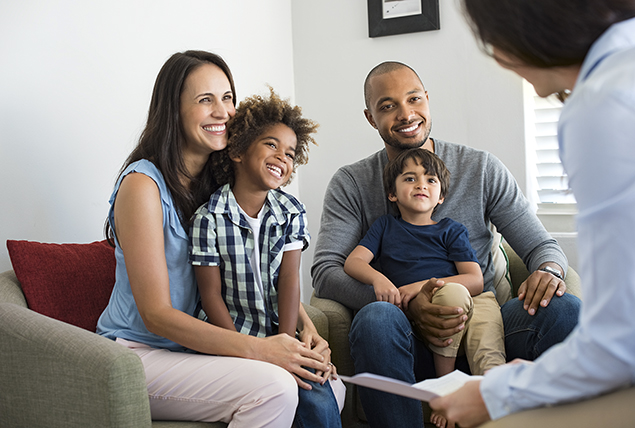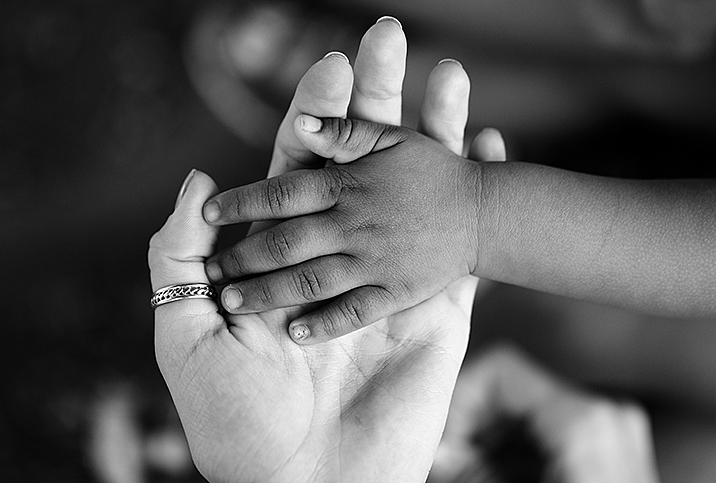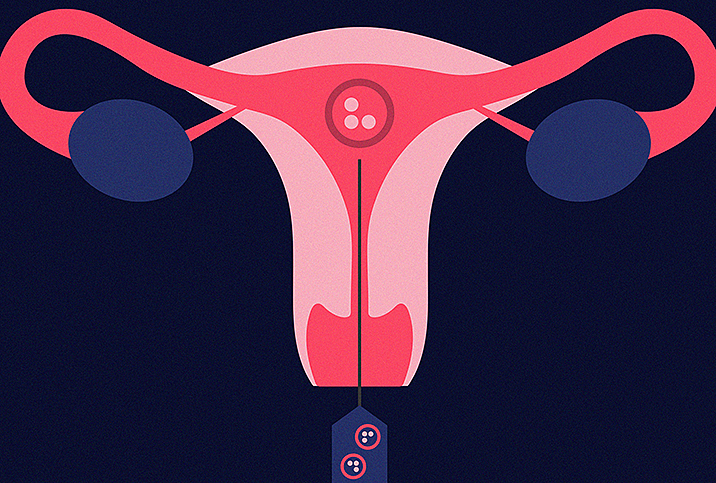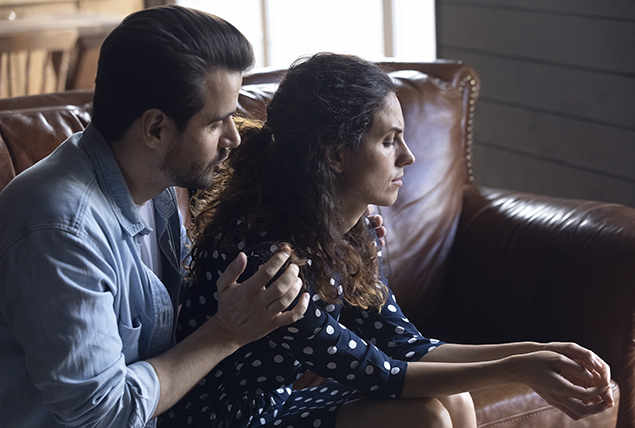How to Navigate an Open Adoption

Key Points
- An open adoption is when the adoptive and birth families share identifying information and have contact with each other during and after the adoption process.
- Open adoptions are common in the United States but can vary in communication levels. Around 95 percent of domestic infant adoptions are open adoptions.
- Positive adoption language encourages the world to view adoption as a positive option and not a second-best to pregnancy. It's the difference between shame and confidence.
In the case of adoption, it's always important that we do everything in our power to make sure an adopted child feels accepted. However, every family situation will have a unique journey.
My family is interracial. My husband is Black, I am white and our biological child is bi-racial. And now we are in the process of adopting a baby through an open adoption.
What is open adoption?
An open adoption is when the adoptive and birth families share identifying information and have contact with each other during and after the adoption process.
Open adoptions are common in the United States. Roughly 95 percent of domestic infant adoptions are open adoptions, according to the Adoption Network.
However, an open adoption can look different for every family. Some families might meet in person with birth families a few times a year and some might just exchange letters and pictures back and forth on occasion.
The degree of openness can change over the years, too, with some families having limited contact with birth families in the early years after adoption and increasingly more contact as the child gets older or vice versa.
Open adoption is also defined by what it's not. It is not co-parenting. All legal, medical and parenting decisions are made by the adoptive parent(s).
How does open adoption work?
The steps for an open adoption usually follow this pattern:
- Each party decides what they want from an open adoption and their level of openness.
- The prospective birth mother selects an adoptive family.
- Both parties get to know each other through pre-placement contact.
- The adoptive parent(s) and prospective birth mother meet in person at the hospital.
- The birth parent(s) and adoptive family decide on the amount of contact they will have.
- The birth parent(s) and adoptive family continue their relationship after placement and the adoptive parent(s) maintain contact with the birth parent(s) as the child grows up.
"If you're going through an adoption, everyone involved should hire an attorney, whether it's the adoptive parent seeking adoption or the birth parent signing over their rights," said Jaclyn Roberson, a licensed attorney with Roberson Duran Law in San Antonio.
Third-party communication
In the case of a fully open adoption, the birth parent(s) and adoptive family have direct contact with one another. However, for families not ready to make this commitment, there are other options.
Semi-open adoptions offer limited direct communication. Communication standards are determined by both parties before the adoption. Communication often takes place via a third party, such as an adoption agency, an adoption attorney or a designated intermediary.
Open adoption contract
If the thought of an open adoption makes you anxious because of the unknown, an open adoption contract or agreement is worth consideration. In this case, the birth parent(s) and the adoptive parent(s) come together to outline specific details and expectations for ongoing contact.
An open adoption contract sets boundaries on how and how often all parties will stay in contact after the adoption takes place. While the birth parent(s) and adoptive parent(s) set up the guidelines, a licensed adoption agency will compose the final draft.
"A lot of states do not actually have statutes on the books regarding open adoption," Roberson said.
One reason a birth parent(s) may agree to an open adoption is because it allows them to follow their child until they turn 18, have access to photographs and videos, and be able to attend significant school functions.
However, it should be noted that if the adoptive parent(s) live in a state where there's no statute providing for open adoption, even if they reach such an agreement, there's no way to enforce it.
Some people sign over their rights to their child thinking that they're going to continue to be a part of their child's life, but the adoptive parent(s) may later deny access and there's no legal recourse to do anything about it.
"Meeting with a lawyer and creating a post-adoption contract agreement is vital so everyone knows what to expect in the future and then stick to it as best you can," said Heather Featherston, an adoption specialist and the vice president of Lifetime Adoption.
This agreement should outline how often the adoptive family will send photos, provide updates via email or social media, and list how many visits are allowed per year.
Informal open adoption
The degree of openness can change over time. Some families may begin with an open adoption contract and third-party communication. But as relationships grow and foster, families might switch to a more informal open adoption. The birth parent(s) and adoptive families may exchange all identifiable information such as phone numbers, last names and addresses to make this process easier.
Recommended
- Foster a Sense of Belonging for Your Adopted Child: Adoptions can be a great option for prospective parents, but here's how to help the kid.
- Postadoption Depression Is Common Yet Under Discussed: Feeling like you fall short of 'super parent' status? It might be more than just sadness.
- Raising an Anxious Child as an Equally Anxious Mom: Being diagnosed with general anxiety disorder has given my son and me healthy ways to cope.
Who is open adoption for?
"Open adoption works well in situations where the adoptive parents and the birth parents have a good relationship, meaning they get along and trust each other," Roberson said.
An open adoption can be for anyone willing to allow the birth parent(s) into their adopted child's life. This will require communication to avoid crossing boundaries and personal space violations, unrealistic expectations and the handling of conflicting values. That's where the adoption agency and a lawyer can be helpful to make sure both sides understand what moving forward will feel like.
"The birth parents may choose to not do an open adoption because maybe they don't want access to their child. Maybe that's going to be too difficult,"Robertson said. "Maybe they recognize either that they're not a safe place for the child or maybe they just realize that for the child to thrive and grow, it would be best that the adoptive parents take control."
What are the benefits of open adoption?
There are potential benefits to an open adoption. For the child, open adoption can potentially mean the following:
- Better understanding of the reasons for placement
- Connection to cultural and ethnic background and ancestry
- Continued contact with potential siblings outside of the adoptive family
- Medical information access
- Sense of belonging
Featherston believes children have higher self-esteem and more confidence when the details of their adoption are openly discussed, especially if they were placed for adoption out of love.
"These kids have the opportunity to ask their birth parent questions about family history and may benefit from knowing where they came from and why they may have certain traits, such as blue eyes or red hair," she added.
For the adoptive parent(s), open adoption could potentially include these benefits:
- Access to one or more birth family members who can answer important questions, such as those dealing with medical information.
- Build lifelong relationships with birth families.
- Less fear the birth family will try to reclaim their child.
For the birth parent(s), open adoption could include the following positive attributes:
- Comfort knowing the whereabouts of your child.
- Peace knowing your child is safe and loved.
- Personal relationships between the adoptive parent(s) and the child.
- Sense of control by being part of the process of selecting the adoptive parent(s).
"We all say it takes a village to raise a child. Well, sometimes that village can have adoptive parents and birth parents," Roberson said. "There's absolutely nothing wrong with that. It allows them to have more of a safety net, a village that can surround them and love them."
How we plan to navigate relationships after open adoption
Our baby will know they are adopted from birth. We have already been preparing our son, too, for the arrival of the baby and explained how their arrival is different from how he came to be part of our family.
We are also putting some safeguards and boundaries into place early, so our family and friends are prepared for the day our baby comes home.
Avoid Labels
When parenting adopted children, it's important to be aware of any labels that can highlight their differences in a negative light and make them feel "othered."
Both of our children, adopted and biological, will be called "our children." We will be their parents—with no adjectives placed in front of that label.
Positive adoption language encourages the world to view adoption as a positive option and not a second-best to pregnancy, according to adoption attorneys Celeste Liversidge and Jill Cucullu, founders of AdoptMatch in Pasadena, California.
It's the difference between shame and confidence.
Other terms to avoid may include the following:
- Adoptive parent or adopted child (other than when needed to clarify for medical reasons, for example)
- Given up for adoption or is adopted
- Natural parent
- Real parent
- Unwanted child
Positive language when discussing adoption may include the following phrases:
- Biological parent
- Birth parent
- Child placed for adoption or was adopted
- Chose adoption
- My child
- Parent
"To the people in your life—such as your extended family, friends, teachers, people at church and workplace—you should talk about your child as if they're your birth child. Often, people in your lives will say things like, 'Is this your real child?' or, 'Who are their real parents?'" Roberson said. "You are their real family. The people in your life need to understand that."
For Parents of Children With Differences, Marital Teamwork Is Crucial: The process can be challenging, but nurturing your relationship can help you cope.
Prevent feelings of isolation
A lack of personal space is part of being a parent, but with adoption, a new baby needs a lot of bonding time. It also means avoiding certain phrases and comments.
In our family, we will avoid pointing out how our first child looks or acts like a member of the family in front of our other child, who won't share our genetic makeup. It might be helpful to seek out a trained, experienced therapist or counselor for guidance to help keep your adopted child from feeling disconnected from the family.
According to Jill Parker, a clinical counselor and social worker based in Vancouver, everything largely depends on the child's story.
"If your adoptive child looks different from the rest of your family, make sure they understand that they're special and loved and that being different is OK," said Roberson.
Treat both sons the same
Parenting roles in an open adoption are at the discretion of the adoptive parent(s).
If the birth family of our adopted child wishes to have an ongoing open relationship with us, we will make sure that they have a relationship with our biological son, too.
The birth family will receive updates and photos of both of our children. If we decide to meet, they will meet with both children. Of course, our parents, as grandparents, will treat our adopted child as their grandchild just as they would our biological child.
"Never stop conveying to both children how much they are each loved and how each child was brought to the family in their own special way," Featherston said. "One way is not better or worse, they're just different."
The bottom line
Open adoption can be a beneficial, beautiful choice for some families. Consider seeking out a family therapist or counselor, and a lawyer, so you can determine your best option.


















